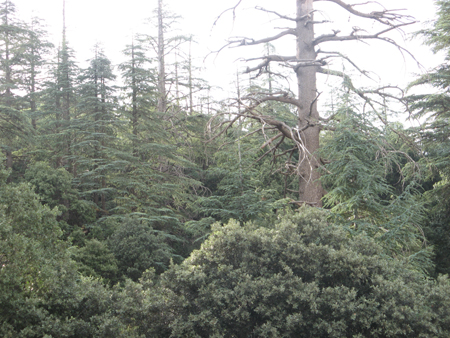Increasing drought sensitivity and decline of Atlas Cedar (Cedrus atlantica) in the Moroccan forests
Increasing drought sensitivity and decline of Atlas Cedar ( Cedrus atlantica ) in the Moroccan forests
Climate-related tree decline and mortality is a recurrent phenomenon that has been reported in a variety of forest communities around the world. Drought-induced mortality has been noted in forests subjected to severe water deficit, many of which are located in the Mediterranean Basin. We aim to understanding the interactions between human-induced soil degradation, climate change and forest structure on tree growth and forest decline. We are investigating the relative contribution of soil, climate, tree features (age, size) and stand structure on Atlas cedar (Cedrus atlantica) radial growth in forests that have experienced heavy grazing and logging in the past.
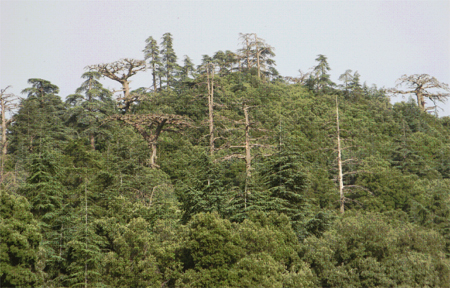
Colleagues
Juan Carlos Linares, Jose Ignacio Seco, José Merino.
Departamento de Sistemas Físicos, Químicos y Naturales, Universidad Pablo de Olavide. Ctra. Utrera km. 1, 41002. Sevilla, Spain.
Lahcen Taïqui.
Faculté des Sciences. Mhannech II. 93002. B.P 2121. Tétouan, Morocco. Jesús Julio Camarero. ARAID, Instituto Pirenaico de Ecología, CSIC. Avda. Montaña, 1005. 50192. Zaragoza, Spain. Gabriel Sangüesa. Instituto Pirenaico de Ecología, CSIC. Avda. Montaña, 1005. 50192. Zaragoza, Spain.
Jose Antonio Carreira, Benjamín Viñegla, Victor Lechuga, Patricia Gilarte.
Departamento de Biología Animal, Vegetal y Ecología, Universidad de Jaén. Campus Las Lagunillas, 23071. Jaén, Spain.
Victoria Ochoa.
Universidad Rey Juan Carlos. Área de Biodiversidad y Conservación. Escuela Superior de Ciencias Experimentales y Tecnología. C/ Tulipán s/n, Móstoles, 28933 Spain.
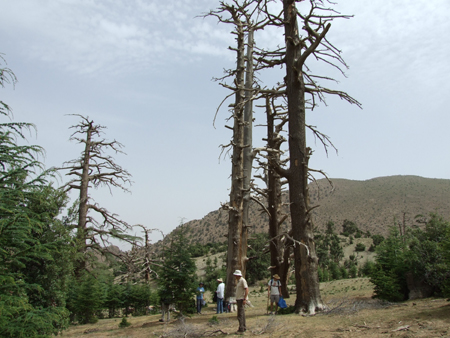
The Atlas cedar ( Cedrus atlantica ) is an endemic species of the North African mountains from Morocco and Algeria. Although it has relatively wide tolerances with regard to climate and soil type, Atlas cedar is threatened by climatic change, particularly by the projected temperature increase, which will alter soil-water availability and plant evapotranspiration. Since the early 1980's, severe drought have been related to Atlas cedar decline and mortality, mainly in the drier mountainous areas near the Sahara.
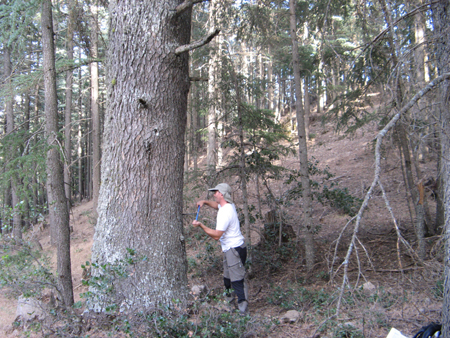
In addition to these hypothesized climate-driven factors, human perturbation by overgrazing, logging, pruning of lower branches for livestock winter fodder and firewood have led to soil erosion and degradation of the remaining historic forest, resulting in a loss of natural vegetation cover. Moreover, crown defoliation by processionary caterpillars ( Thaumetopoea bonjeani and T. pityocampa ), cedar bark stripping by Barbary Macaques ( Macaca sylvanus ), and damage by cedar bark beetles ( Phaenops marmottani ) seem to have exacerbated the recent Atlas cedar decline.
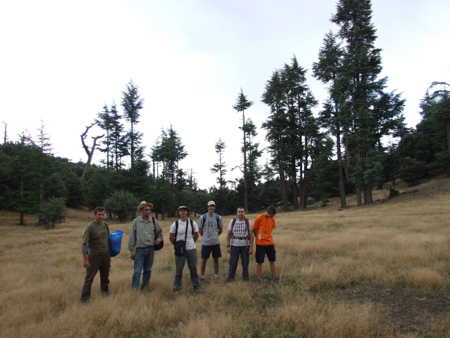
In some places, the Atlas cedar mortality appears to take place on dry sites, affecting mainly old trees. Drought-induced mortality of large trees, as well as the selective logging, pruning and pollarding of these big individuals, trigger the replacement of the original canopy trees by new individuals. Because altered conditions of light and soil moisture are expected in the gaps caused by tree mortality or logging, compared to canopy conditions, other species with different resource requirements could undergo successful recruitment, with major implications for community biodiversity and dynamics.
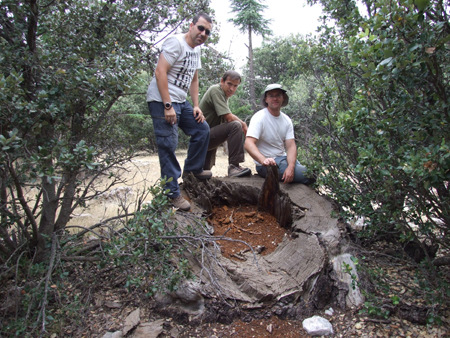
Dendrochronological methods
Dendrochronological methods are applying to quantify patterns in basal-area increment and drought sensitivity of Atlas cedar thought their distribution range in Morocco and also including Atlas cedar forestations from south Spain. We are studying soil structure and quantifying the structure in Atlas cedar stands with contrasting tree density, age, and decline symptoms.
